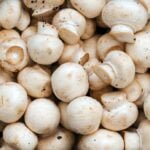What is the best temperature conditions for growing. Mushrooms
Title: Mushroom Temperature Conditions: Understanding Optimum Growth Parameters for Different Species
Introduction (144 words):
Understanding the ideal temperature conditions for growing mushrooms is crucial for ensuring successful cultivation. Different mushroom species have specific temperature requirements that impact their growth and fruiting stages. This comprehensive guide will explore the optimum temperature ranges for various mushroom species, shed light on cold-tolerant mushrooms, highlight temperature requirements during the fruiting stage, and discuss the role of temperature drop in inducing mushroom fruiting. Whether you are a beginner or experienced cultivator, this article aims to provide you with valuable insights to enhance your mushroom-growing endeavors.
Cold-Tolerant Mushroom Species (372 words):
While mushrooms are often associated with warm and moist environments, some species thrive in colder temperatures. These cold-tolerant mushrooms exhibit remarkable adaptability to cooler climates, making them well-suited for cultivation in regions with lower average temperatures.
Notable cold-tolerant mushroom species include the Birch Polypore (Piptoporus betulinus), Brick Top (Hypholoma mutabile), Cauliflower Mushroom (Sparassis latifolia), Chicken of the Woods (Laetiporus spp.), Enoki (Flammulina velutipes), Lion’s Mane (Hericium erinaceus), Maitake (Grifola frondosa), Nameko (Pholiota nameko), Oyster (Pleurotus spp. – Cold-tolerant ecotypes), Shiitake (Lentinula edodes – Cold-tolerant ecotypes), and Tiger Sawgill (Lentinus tigrinus).
These cold-tolerant mushrooms can flourish within a temperature range of 32–59°F (0–15°C). Maintaining cool conditions is crucial to ensure their successful growth, colonization, and fruiting.
Optimum Temperature for Mushroom Growth (692 words):
For optimal growth and development of most mushroom species, providing a carefully controlled environment with the right temperature range is essential. While certain mushrooms favor cooler temperatures, others thrive in warmer conditions. Understanding these temperature requirements is crucial for maximizing yields and promoting consistent growth.
Pleurotus eryngii and P. cornucopiae prefer temperatures ranging between 25-35°C during their fruiting stage. Offering a stable environment within this temperature range promotes healthy fruiting and helps maintain optimal mushroom texture, flavor, and size.
The Common Button Mushroom (Agaricus bisporus) thrives at temperatures between 18-22°C during colonization and drops to 12-16°C during fruiting. These temperature conditions allow for healthy mycelium growth and robust fruiting body formation.
Shiitake mushrooms (Lentinula edodes) prefer a temperature range of 23-27°C during colonization, while a decrease to 12-24°C during fruiting encourages fruit body initiation and subsequent growth.
The Reishi Mushroom (Ganoderma lucidum) favors a temperature range of 20-24°C for colonization and 12-16°C for fruiting, enhancing its bioactive compound content and overall growth.
Lion’s Mane mushrooms (Hericium erinaceus) show optimal growth between 18-24°C during colonization, while cooler temperatures ranging from 8-13°C promote fruit body formation.
Fruiting Stage Temperature Requirements (676 words):
The fruiting stage is a critical period when mushrooms transition from mycelium development to the formation of fruiting bodies. Maintaining suitable temperature conditions during this stage is vital for optimal yields and quality harvests.
In general, lowering the temperature helps induce the fruiting process for many mushroom species. This temperature drop signals the fungi that conditions have changed, triggering the growth of fruiting bodies. However, different species may exhibit varying responses to temperature fluctuations during this stage of their life cycle.
The Common Button Mushroom (Agaricus bisporus) requires a temperature drop to around 6-12°C for 1-2 weeks after full colonization to initiate fruiting.
Oyster mushrooms (Pleurotus ostreatus) can be stimulated to fruit by lowering the temperature to approximately 10-15°C for 24-48 hours, along with a slight decrease in humidity.
Shiitake mushrooms (Lentinula edodes) need a temperature drop of around 5-10°C for 7-10 days to initiate fruiting. Increasing fresh air exchange during this period can further stimulate fruit body formation.
Lion’s Mane mushrooms (Hericium erinaceus) require a gradual temperature decrease to 4-10°C, maintained for approximately 1-2 weeks, to stimulate fruiting.
Conclusion (166 words):
In conclusion, understanding the temperature preferences of different mushroom species is key to successful cultivation. Some mushrooms thrive in colder temperatures, while others require warmer conditions for optimum growth. Additionally, the fruiting stage often necessitates a temperature drop to induce fruit body formation. By providing the right temperature conditions specific to the species being cultivated, cultivators can enhance yields, improve quality, and achieve consistent results in their mushroom-growing endeavors.
By implementing these temperature guidelines and maintaining controlled environments, mushroom cultivators can optimize their practices and enjoy abundant harvests throughout the year.
With this knowledge of temperature requirements, both beginners and experienced growers can cultivate a variety of mushroom species successfully, expanding their options and enhancing their overall mushroom-growing journey.




